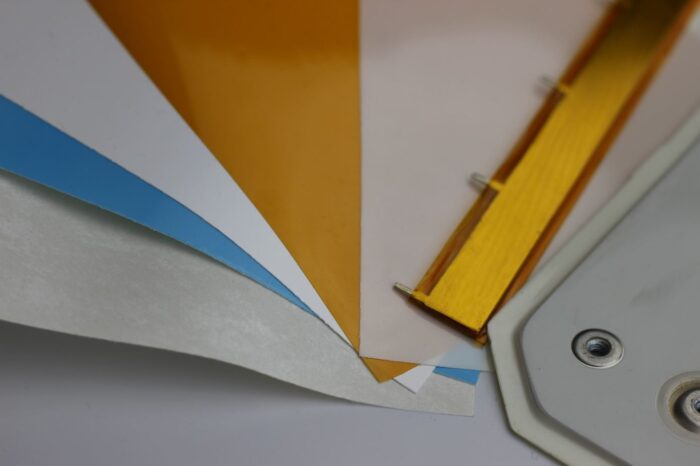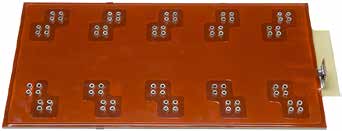
Insulating Films

Bus bar laminations reduce inductance. This is achieved by passing current bi-directionally through laminated conductor sheets, thereby cancelling the induced magnetic fields, and the inductive reactance. By laminating the conductors together, separated by only a thin insulator, or insulating film, conductors can be positioned as close as .005” apart, maximizing the mating surfaces of the conductors. By reducing the thickness and increasing the width of the conductors, mating surface geometry can be increased. This significantly reduces inductance and increases capacitance. By increasing the capacitance, the material characteristic impedance can be reduced. This has the effect of ultimately reducing signal noise and conductor crosstalk.
Laminated bus bars come in many types of dielectric coating. Each coating has unique characteristics that can be utilized for specific applications. The table below lists various insulating films, and can help you decide what is required for your design. This is key to maximizing the high-efficiency and high-energy density demands of today’s power conversion products.
INSULATION MATERIALS TABLE
| Material | Continuous Use Temp C° | Dielectric Constant ASTM D150 |
Dielectric Strength ASTM D149 (Volts per ml) |
Flammability Rating | Characteristics |
|---|---|---|---|---|---|
| Epoxy Glass (FR4) | 140 | 4.3 | 1250 | UL 94 V-0 | Superior mechanical and dimensional stability |
| Mylar (PET) | 105 | 3.3 | 7500 | UL 94 VTM-0 | Cost effective,tear, chemical,and moisture resistant |
| Tedlar (PVF) | 105 | 11.0 | 3500 | UL 94 HB | Chemical/solvent resistant; good mechanical properties |
| Teonex (PEN) | 140 | 3.4 | 5000 | UL 94 VTM-0 | Higher deflective strength & continuous use temp |
| Nomex | 220 | 1.6 | 430-845 | UL 94 V-0 | Flame resistant, durable |
| Kapton | 400 | 3.7 | 5000 | UL 94 VTM-0 | High temp rating & range stability |
| Epoxy Powder Coating | 130 | 4.0 | 800 | UL 94 V-0 | Flame, moisture resistant; ideal for multiple shapes |
With the guidance of a competent laminated bus bar manufacturer, designers and engineers are able to make the right choice in insulating material and conductor (raw or plated copper) thickness. Insulation thickness, type, and construction is a function of the applications temperature, ampacity, environment, and installation techniques.
